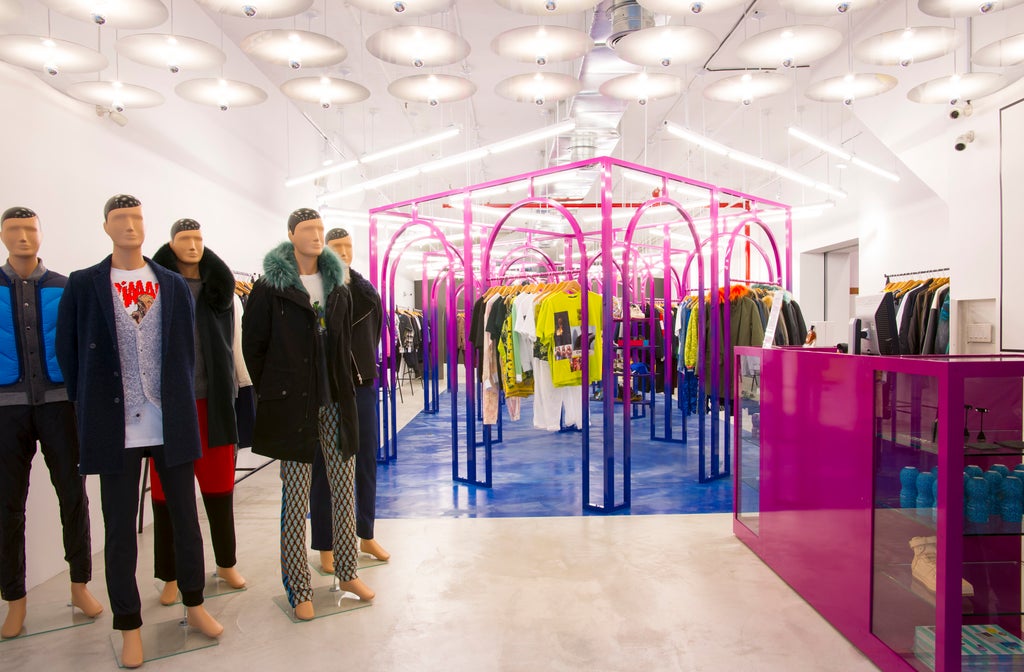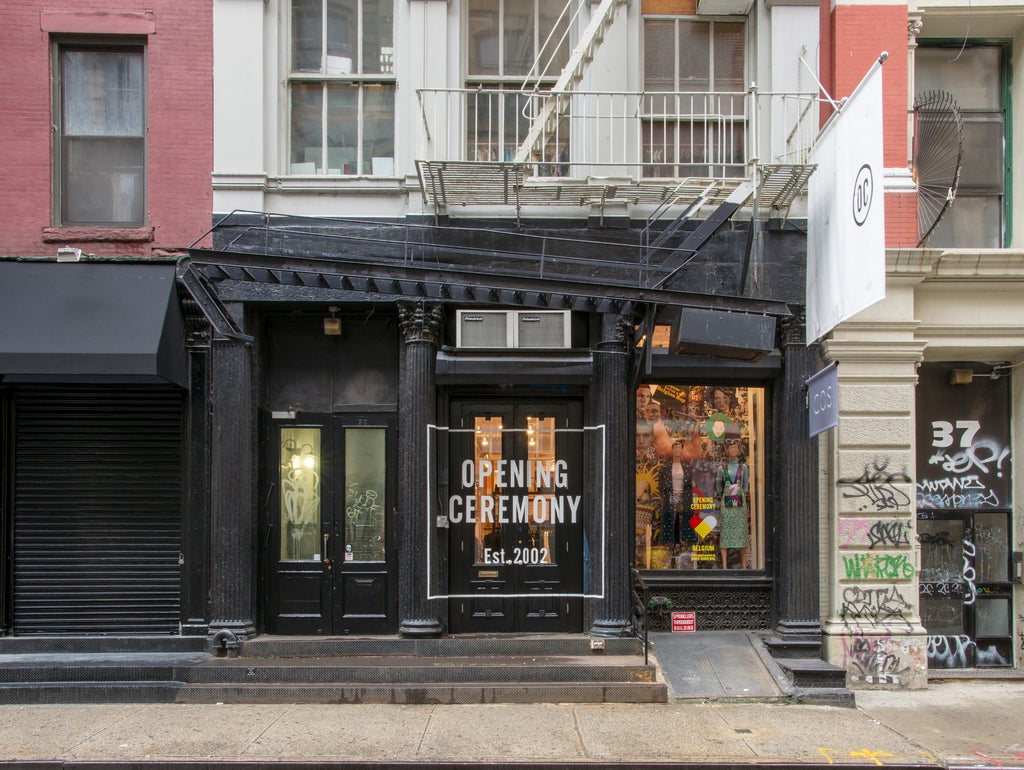In the spring of 2008, I spent all the money I had saved and bought myself a cross-country plane ticket from San Francisco to New York City to see if I wanted to move there. Armed with thick stacks of MapQuest print-outs, I traversed Manhattan, determined to see every landmark on the deranged list of places that I considered to be the heart and soul of a place I read about obsessively on gossipy, local blogs I devoured like Gawker and The Cobrasnake. I was a lost Goldilocks who hated the Bay Area. By the time I reached the end of the list, I had hoped that I could tell whether the city would be my new home.
As someone who studied photos of every single regular at a Misshapes party, but only knew one person in real life who had actually lived in New York (a family friend, whose dorm room floor I was crashing on), the list had zero overlap with an average tourist’s. Mine included the nightclub Don Hill’s, which looked far less exciting at 2 p.m. in the afternoon, and the juice bar Liquiteria, a place I heard served single-serving bottles for the price of a meal. But at the very top of the list was what, to me, felt like the epicenter of the most exciting, best stuff the city was about: 35 Howard Street, the home of the original Opening Ceremony flagship.
That store will be closing its doors this year. On Monday, Opening Ceremony founders Carol Lim and Humberto Leon sent out a statement announcing that after its recent acquisition by fashion platform New Guards Group, the brand would halt selling any merchandise from other designers other than its own label, move its business online, and shut down its retail locations, without concrete plans to continue a brick-and-mortar business. In a letter that was addressed to their family of employees, collaborators, and fans, the duo wrote: “We are stepping back from multi-brand retail, for a moment, so we can come back with an experience that is just as inspiring, filled with love, and relevant for the years ahead as Opening Ceremony has been.”

With Barneys’ stores closures last year, there are only a handful of high-fashion retailers left that can say that they’re devoted to fostering new indie brands. Dover Street Market and its global fleet of stores is a clear leader. Certain local gems like Alara in Lagos or Totokaelo in Seattle offer a more curated, but still delightful, playground to get lost in. But there’s less appetite — from both investors and customers — to take a chance on clothing that demands a sense of imagination. As consumers shop to fulfill functional needs, companies that provide superlative products — the longest-lasting jean, the most ethical cashmere sweater, the best white T-shirt — are edging out magpie retailers.
What started as a marketplace modeled after the Olympics, that picked designers and makers from one country at a time to introduce to New York customers, Opening Ceremony was founded on the idea of taking big chances on unproven, unestablished, and unstable designers. Many of the items I’ve bought there have outlasted the brands that first made them. The same things that made it so entertaining to shop there — the never-ending merchandise, the small quantity of each designer — were likely the same qualities that made Opening Ceremony a risky business.
Today, these emerging designers can sell directly to consumers. The internet and social media has made middlemen retailers like Opening Ceremony irrelevant as a marketplace. But “discovery” platforms — influencers and Instagrammers — don’t exactly foster newness. Clicking ‘like’ on one photo of a lime-green turtleneck leads me to become inundated with photos of other electric-hued tops. That is not discovery. That’s the fashion equivalent of being fed last week’s leftovers when you asked for something new. When our keystrokes and clicks are monitored to instantly feed us back whatever we just consumed, shopping can feel like a never-ending cycle of deja vu. It takes a lot more effort to end up somewhere strange and unfamiliar. When Opening Ceremony was in its heyday, it was as simple as walking through its doors.
In 2008, Opening Ceremony was thriving, because that kind of dressing — experimental, brave, sort of unhinged — was how every young, ambitious, and creative person dressed. It was every downtown It-girl’s favorite store. It was where every fun-looking person found their favorite thing to wear. Every artist, musician, and designer I admired was shooting, designing, ideating, or collaborating with Opening Ceremony. The store’s name aside, Opening Ceremony was the main act: It was what people came to see.
Cracking what Opening Ceremony was seemed like the key to cracking what New York City was all about. And cracking that meant finally going to Howard Street.
Opening Ceremony was on a shaded, quiet street lined with cast-iron storefronts, but the entrance to the store itself was strewn with people sitting on an expansive stoop, like they were waiting for a portrait photographer. Each person was dressed with a singular sense of humor and character, as if they had randomly drawn a bizarro archetype from a hat: Sports But Make It Showbiz, Goth Schoolgirl Orphan, Kids By Way Of PBS. It was so perfectly eclectic; I had the distinct feeling that I had stumbled across some kind of Fashion Sesame Street.

Inside, a sales clerk stopped me to ask me who my jacket was designed by. She didn’t flinch when I told her it was from the clearance bin at Urban Outfitters, and instead said that it reminded her of this new designer they had gotten in late last year from, she was super into it, and, Would I like to see?
I followed her through a maze of painted plywood, and down the rickety set of peeling stairs to a rack of clothing by Tsumori Chisato. I could see that she was right. My jacket — a cropped little thing in thin-wale corduroy, covered in a confetti sprinkle of ditsy flowers — looked like it would have belonged on that rack along alongside oversized sack dresses covered in ‘70s storybook illustrations, gigantic paints in prints that felt both garish and glamorous to me, and fringed tops that looked like a three-dimensional mesa sunset.
I was scared of the price tags — three figures, well above what I could afford. But the salesperson pulled out a top and handed it to me. And this one? She leaned forward. This one’s on last mark-down, although I’m not sure why. It was a cotton-jersey blouse that looked like it was made from a tangle of sailor’s rope and sun-softened muslin. It was $45. I spent the last of my cash, wore it the next day, and decided that New York was a place where I could find both comfort and joy. I still have it, and wear it often.
I had always liked fashion in the sense that I liked buying clothes and enjoyed putting them together in outfits for myself. But after that day in Opening Ceremony, I began to live fashion. It became a language, a community, and a purpose. Fashion, as celebrated by Opening Ceremony, was about enthusiastic self-expression, discovery and curiosity as life principles, and seeing how far you could stretch the limits of taste, and the boundaries of definitions.
Opening Ceremony played by their own rules. They were among the first to turn fashion shows into actual shows, showcasing dance performances, short films, and quixotic plays instead of a catwalk. They were a talent incubator; you could literally clock the amount of time it took for a store employee like Darlene and Lizzie Okpo or Anna Gray to go from model, to writer, to soon after, the founders of their own companies, heads of others, and artistic powerhouses in their own right. They were a creative studio, among the first retailers to collaborate with heritage companies like Pendleton and Tevas, and willingly extending their overflowing cache of relevance to what people without imaginations might have considered deeply uncool companies. They were pioneers of inclusivity during a time when advertisements believed having a redhead in a fashion campaign was considered “diverse.”
“As children of immigrants who grew up in the suburbs, looking through magazines to learn about what was happening in fashion and culture, we feel incredibly lucky to have been able to even start this company,” Humberto and Carol wrote in the statement announcing the closure of their stores. Strays, transplants, and people like me were lucky to have the store, too. We were underemployed kids of the recession from all backgrounds, many of whom were also children of immigrants who moved to New York without jobs nor connections, but with juiced-up ambition and a knack for spotting opportunity. We came here because we wanted to be the best at something many of us couldn’t even name yet. And we orbited the Opening Ceremony universe because it seemed like a place that cared so much about seeing people like us make it on our own terms, in our own ways, however ineffable they might be.
As the brand grew bigger, the brand added stores across the world. But the NYC store itself expanded in spurts and additions, as if the shop were an avatar for the company. The store was labyrinth, with narrow staircases in the backs of small rooms, and chambers and antechambers that opened up into expansive arenas of clothing. At a certain point, you had to exit onto Howard Street in order to enter into another section of the store. There was one time when I got so lost, I had to call a friend for help.
Shopping without a singular purpose, but rather just to explore, was as much about learning about clothing as it was learning about myself. It was frustrating, and sometimes lonely, but deeply thrilling when came across something you had almost overlooked, but reflected yourself back to you in a way that glowed.
We were lucky to have had Opening Ceremony for as long as we did.
Like what you see? How about some more R29 goodness, right here?
Disneyland Just Transformed Itself Into A Catwalk

No comments:
Post a Comment